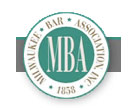Lavern “Lavvie” Dilweg, Marquette Law School Class of 1927, has finally been added to the membership of the M Club, Marquette University’s Athletic Hall of Fame. Earlier this week, the University announced that Dilweg is one of seven members of this year’s class who will officially be inducted into the M Club on Saturday, May 20.
Dilweg enrolled at Marquette in the fall of 1922, and starred in football, basketball, and track during his time as a Marquette athlete. Among other honors, he was the first Hilltopper (as the school’s teams were known in his era) to be named a first-team All-American football player. In 1924, after two years in the college, he enrolled in the law school where he continued to participate in varsity athletics. During his third year of law school, having exhausted his collegiate eligibility, he played for the Milwaukee Badgers of the National Football League.
The Badgers folded after the 1926 season, and Dilweg joined the Green Bay Packers, for whom he starred through the 1934 season. During his years with the Packers he played on three NFL championship teams and was named a first-team All-NFL End five times. After his career with the Packers, he practiced law in Brown County, Wisconsin and served in the United States Congress.
There is nothing new about Dilweg being overlooked for a hall-of-fame. Many historians of the early NFL view Dilweg as the best player from the league’s formative era not yet inducted into the National Football League Hall of Fame in Canton, Ohio.
A more detailed examination of Dilweg’s career in sports, law, and politics can be found at http://law.marquette.edu/facultyblog/2009/11/09/lavvie-dilweg-27-mu-laws-contribution-to-the-nfl-and-to-congress/.

